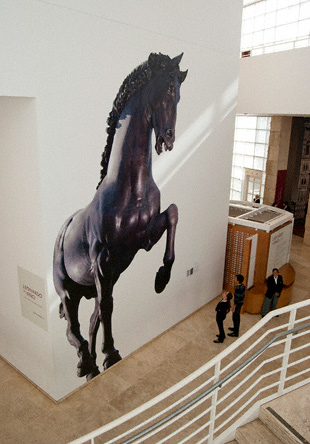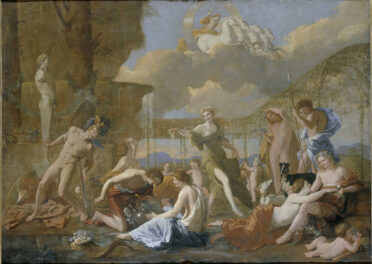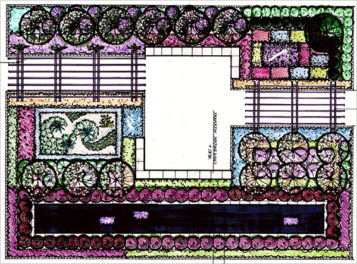More than any other exhibition I’ve worked on, Leonardo da Vinci and the Art of Sculpture: Inspiration and Invention feels historic. To stand there as the crate containing Leonardo’s painting of Saint Jerome from the Vatican was opened, to imagine that one of only a dozen paintings by Leonardo that still exist could be here in Los Angeles, was incredible. Over 30 years have passed since the last time one of his paintings was in the city.
Just as exciting are the three enormous bronze statues by Giovan Francesco Rustici. When I was a student in Florence, I saw them on the front of the baptistery, where they had stood for hundreds of years. Now they stand in a Getty Museum gallery (if only temporarily). Each statue weighs more than a ton. Watching the installation made me grateful that I am a curator of drawings! It also gave me a new respect for my colleagues in other departments: drawings can just be framed and put on the wall, but statues need plinths, supports, clips, perhaps earthquake isolators. It’s another world.

Installing Giovan Francesco Rustici’s John the Baptist Preaching to a Pharisee and a Levite. Museo dell’Opera del Duomo, Florence. Courtesy the Opera di Santa Maria del Fiore, Florence
Each Rustici bronze traveled here in a crate on its back, and had to be hoisted upright, lifted by a gantry, and swung gently into place. I breathed a huge sigh of relief when they were all there.

Wall mural (photograph by Ramak Fazel) of Nina Akamu’s 24-foot-tall bronze sculpture Il Cavallo, made in homage to Leonardo da Vinci’s plans for the Sforza horse
Already visitors have been taking their photographs in front of the giant 24-foot-high photo mural of a bronze horse in the entrance hall.
Sculptor Nina Akamu made the horse, which stands in Milan as an homage to Leonardo. Leonardo intended to make a bronze horse on such an unprecedented scale for the ruler of Milan; it would have weighed 70 tons.
We have many drawings relating to it in the exhibition, including some of the most beautiful drawings I know of horses, but the statue itself was never made. The bronze amassed for it was sent away by the ruler to make cannons. Such are the ways of men…




When does this exhibit open, and how long will it be open to the public?
It’s open now and runs until June 20, 2010. Come on up!
This is one of the most exciting exhibitions that I’ve seen at the Getty (close runner up to the Mt. Sinai exhibition). What an absolute DELIGHT to be able to savor so many Leonardo drawings up close. Then you turn the corner and there are those breath-taking colossal Rustici bronzes! Thank you and your staff for a stunning set-up. More, please!
Thank you Julian and Anne-Lise for “Leonardo da Vinci and Renaissance Sculpture: Looking Closely”.
Learned so much and have gotten very inspired by the wealth of information. Looking forward to Sunday’s “Il Cavallo: A Sculptural Homage to Leonardo da Vinci.” Sculptor Nina Akamu talks about the creation of her giant 24-foot-high bronze horse in homage to Leonardo’s unfinished Sforza monument. And was lucky enough to get a ticket for “Leonardo da Vinci versus Michelangelo: Battles in the Palazzo Vecchio, Florence.” Julian Brooks, associate curator of drawings, the J. Paul Getty Museum, investigates the rivalry between Leonardo and Michelangelo, which was precipitated by their commissions in Florence, and the astonishing innovations that resulted.
Hi there.
“The bronze amassed for it was sent away by the ruler to make cannons.”
Typical the art of warfare.